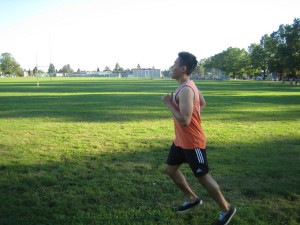Cases of severely pulled leg muscles would require medical attention. In such instances of severe injuries to the calf, joint areas or thigh, arthroscopic surgery might be carried out to repair the torn muscle tissue or cortisone shots are given for pain relief. It is important to note that most strains are moderate and caused by overuse or inadequate warming up than traumatic damage.
The inflammation and pain can be managed at home as well as with rehabilitative exercise. Pulled leg muscles that are debilitating due to muscle weakness must be assessed by a doctor so that proper treatment can be started as soon as possible.

Proper rest
Stress placed on the damaged leg muscles will only worsen the problem. Any activity that causes pain should be stopped and avoid using the legs. The individual should rest to help reduce the pain. The affected leg should be elevated on several cushions and pillows if the knee, calf or ankle is involved.
If walking causes a lot of pain, the individual should walk in smaller steps to reduce stress on the pulled leg muscles.
Relief from pressure
A compression bandage can be placed to provide support to the affected muscle group as well as minimize the swelling. There are many options that can be used such as stabilization boots, elastic thigh wraps and splints since these help protect the leg as it heals. The individual should also use crutches or a cane while walking to reduce the pressure off the muscles as they heal.
Medications
Non-prescription analgesics can provide continuous relief for pain between sessions of ice therapy. Non-steroidal anti-inflammatory drugs (NSAIDs) such as ibuprofen or aspirin are highly effective in treating the pain caused by a pulled leg muscle. It is best to consult a doctor first to ensure that these medications are safe.
Cold and heat
A pulled leg muscle might involve large areas of muscle tissue that is accompanied by acute inflammation. The application of an ice pack can be started right after the injury was sustained is highly effective in providing relief to the pain.
If reusable gel packs are used, they are readily available in various sizes and shapes, thus making them highly effective and convenient for pulled leg muscles. Just make sure that they are applied for 20 minutes at a time up to 3 times in a day while the individual is resting. Once the inflammation has subsided, the ice packs can be alternated with heated packs usually 72 hours after the injury was sustained. If you want to learn more about cold and heat therapy, read here.
Activity
The pulled leg muscle can heal without causing further damage but the affected area should be strengthened to restore its full functionality. The individual should resume activity and perform range of motion exercises as the pain subsides. In most cases, physical therapy is required in order to hasten the recovery period.
